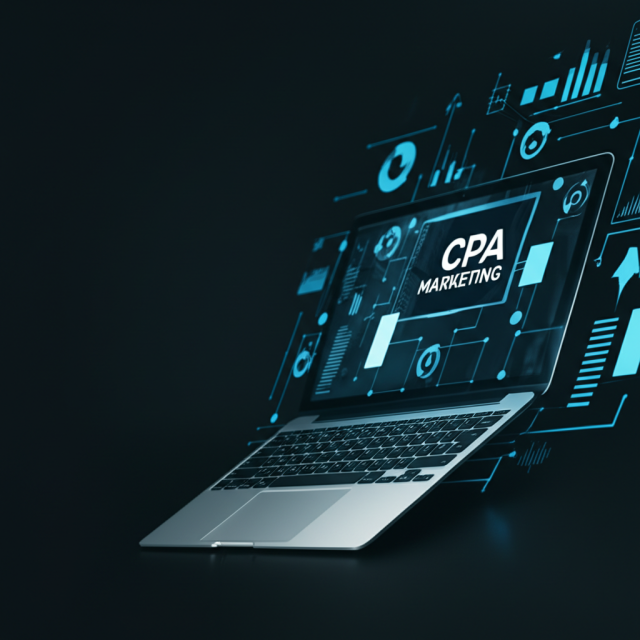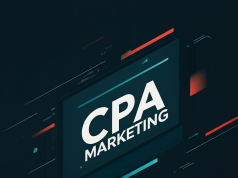CPA Marketing Coaching Mastery: Your Complete Success Roadmap
Welcome to your definitive guide on mastering CPA marketing. Whether you’re a seasoned affiliate marketer looking to refine your strategy or a newcomer eager to dominate the cost-per-action space, this roadmap lays out every critical step. From understanding the core fundamentals to automating and scaling campaigns like a pro, you’ll gain actionable insights and proven tactics designed to accelerate your success.
This comprehensive coaching blueprint combines data-driven research, high-converting funnel design, continuous optimization workflows, and advanced coaching methods to create a self-reinforcing system. By the end of this post, you’ll not only have a clear strategy for launching and growing profitable CPA offers, but also the structure to train teams, onboard clients, or build an in-house coaching program of your own.
Ready to dive in? Let’s unpack the exact steps, tools, and mindset shifts you need for CPA marketing mastery—no fluff, just results-driven guidance.

Data-Driven Insights: Audience Research & Analytics
Mastering CPA Fundamentals
Before you invest time or ad spend, it’s crucial to understand CPA marketing’s core mechanics. Cost per action means you only pay when a visitor completes a desired action—signing up for a newsletter, requesting a quote, or downloading an app. Unlike CPM or CPC, CPA requires pinpoint targeting and persuasive funnel touchpoints. When coaching clients or building your own campaigns, emphasize that every element—from ad copy through landing page design—must be optimized for conversion. Start by mapping out each step of the user journey, assign realistic benchmarks for opt-in and signup rates, and use that framework to compare performance across offers and networks.
Selecting Profitable Niches & Offers
Not all CPA offers are created equal. The secret sauce lies in pairing high-converting products with hungry audiences in niches where you can add unique value. Begin by researching verticals with proven affiliate volume: financial services, health supplements, software trials, and lead-gen for insurance or real estate. Use affiliate network marketplaces to sort offers by EPC (earnings per click) and conversion ratio. Then, refine your search by checking pay-out frequency, geo-target restrictions, and compliance requirements. In a coaching environment, guide your students to prioritize offers that align with their own expertise and audience interests, ensuring they maintain authenticity while maximizing payouts.
Deep Dive into Audience Segmentation
Layered targeting separates amateurs from experts. Leverage demographic, psychographic, and behavioral data to create hyper-specific segments. Pull custom reports from Google Analytics to identify high-value visitor profiles—age groups, device usage patterns, and referring channels. Cross-analyze with Facebook Audience Insights or TikTok’s analytics suite to understand interests, income brackets, and lifestyle factors. Build at least three distinct audience buckets for A/B testing: cold prospects, warm retargeted visitors, and lookalike audiences modeled after your best converters. This segmentation strategy fuels both creative personalization and budget allocation decisions, enabling you to invest more heavily in audience segments that deliver the strongest CPA returns.
Tools & Workflows for Laser-Focused Research
Successful coaches rely on robust, repeatable systems. Integrate tools like SEMrush for keyword intent analysis, Similarweb for competitor traffic sourcing, and Hotjar to capture session recordings. Document each research cycle in a shared spreadsheet or CRM board: record top search queries, social ad examples, landing page layouts, and conversion rate benchmarks. Automate alerts via Google Data Studio or Zapier so you receive real-time signals when performance dips or spikes beyond predefined thresholds. This workflow not only speeds up campaign audits but also trains your team or clients to follow a rigorous, data-first approach—transforming guesswork into precise, scalable actions.
Compliance & Ethical Tracking Practices
Privacy regulations and network terms demand vigilance. Always disclose tracking cookies, opt for server-side tracking where possible, and stay updated on GDPR, CCPA, and other regional laws. Use reputable tracking platforms that offer encrypted click routing and adherence to privacy standards. In your coaching curriculum, stress the long-term value of transparency: consumers trust brands that respect their data, and network compliance ensures your accounts remain in good standing. Future-proof your campaigns by adopting consent management platforms and clear privacy policies on landing pages.

Crafting & Optimizing High-Converting Funnels
Designing Irresistible Landing Pages
Your landing page is where targeted traffic becomes tangible revenue. Focus on a single, bold headline that speaks directly to the audience’s pain point, followed by a concise sub-headline outlining the primary benefit. Use trust badges (SSL seals, recognized certifications) within the first fold to build instant credibility. Below the fold, weave in social proof—short testimonials with headshots or video snippets—and clear, benefit-oriented bullet points. Avoid unnecessary distractions: remove navigation bars, limit outbound links, and opt for a clean, responsive design. In your coaching sessions, provide swipe files of top-performing templates and real-world examples to inspire rapid implementation.
A/B Testing & Heatmap Analysis
Continuous optimization is non-negotiable. Set up split tests for headline variations, CTA button colors and copy, image placements, and form fields. Tools like Google Optimize or VWO can automate variant delivery and statistical significance tracking. Overlay heatmaps from Crazy Egg or Hotjar to visualize click and scroll behavior—identify areas where visitors hesitate or drop off. Document each test in a centralized dashboard: record hypothesis, variant details, sample size, and uplift percentage. This transparent process not only drives incremental gains but also trains your clients to think like conversion scientists.
Automating & Scaling Campaigns
Once you’ve identified winning combinations of audience, creative, and landing page, shift into scale mode. Use bid automation rules in Google Ads or Facebook’s Campaign Budget Optimization to allocate budget proportionally to top performers. Employ dynamic creative optimization to rotate headlines, images, and CTAs automatically—letting the platform surface the highest-engaging variants. Set up rule-based alerts for CPA thresholds: if costs creep above target, automatically pause underperforming ad sets and reallocating spend. In a coaching context, supply your students with pre-built rule templates and step-by-step setup guides to streamline launching multiple campaigns simultaneously.
Advanced Coaching Techniques & Support Models
Effective coaching goes beyond sending over checklists—it’s about accountability, feedback loops, and personalized guidance. Create a hybrid program structure that combines on-demand video modules, weekly group Q&A, and 1:1 strategy calls. Use shared project boards (Asana, Trello) to track each student’s milestones: research completed, landing page launched, first conversion recorded, scaling protocols active. Host monthly mastermind sessions to dissect case studies, brainstorm creative angles, and troubleshoot technical roadblocks. Encourage peer reviews to cultivate a collaborative community where insights propagate quickly and motivation remains high.
Tracking Success & Continuous Improvement
No roadmap is complete without a feedback loop. Establish key performance indicators—CPA, conversion rate, return on ad spend—and review them weekly. Use dashboards (Data Studio, Klipfolio) to blend data from ad networks, landing page builders, and affiliate platforms in one view. Conduct quarterly audits of funnel performance, creative fatigue, and audience saturation. Celebrate wins publicly within your coaching community and dive deep into any underperformers to extract learnings. This relentless focus on iteration ensures your methodology evolves alongside platform algorithm changes and shifting consumer behaviors.
Next Steps & Call to Action
Now that you’ve absorbed the complete success roadmap—from research and segmentation through funnel design, testing, automation, and coaching frameworks—it’s time to put theory into action. Start by auditing your current CPA campaigns against each checklist item above, then prioritize two to three high-impact adjustments this week. Document your progress, share results with your peer group, and keep refining until those CPA metrics consistently hit your profitability targets.
If you’re ready to accelerate your journey with hands-on mentorship, detailed templates, and a community dedicated to CPA mastery, consider applying to our coaching program today. Let’s transform your marketing from sporadic wins into a predictable, scalable revenue engine.









